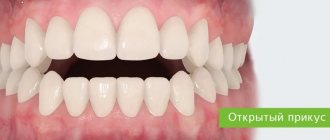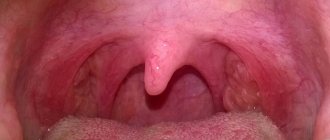Pathogenesis of renal edema
The mechanism of formation of renal edema is associated with the following phenomena in nephrological patients:
- massive loss of protein in urine;
- decrease in plasma albumin concentration;
- hyperlimidemia;
- increased movement of fluid from the intravascular space.
Patients have a high ratio of sodium and potassium in the urine, which indicates an imbalance of water and electrolyte balance.
The mechanism for the appearance of such a symptom is still not fully understood, but the characteristic picture indicates to the doctor pyelonephritis, glomerulonephritis. Filtration and excretion of urine are also impaired with kidney cysts, benign or malignant neoplasms.
Types of swelling on the legs
Edema is classified into several types, depending on the reasons that caused it: • Congestive . They often form when vascular permeability increases, with excess pressure in the capillaries, which accompanies thrombophlebitis and varicose veins. In a healthy person, venous blood flow is directed under pressure from bottom to top; venous valves are responsible for this, which prevent reverse blood flow. The contraction of the muscles in the legs during movement creates a pumping effect. If this physiological mechanism is disrupted, the valves of the veins begin to allow blood to flow in two directions (not only up, but also down under the influence of gravity). As a result, stagnation occurs in the veins, venous pressure increases, and their walls lose tone and become thinner. As a result of thinning of the vessels, fluid from them penetrates into the tissues, causing swelling. In addition, congestion thickens the blood and causes excessive blood clots. • Hydromic . They are caused by the accumulation of excess fluid as a result of kidney disease. A decrease in their filtering abilities and damage to the tubules leads to a gradual movement of fluid from the bloodstream into the tissues. • Neuropathic. This type of swelling is typical for people who suffer from diabetes or alcoholism. The pathology can be caused by several factors. • Cachexic . They appear as a sign of nutritional deficiency. These are caused by poor protein nutrition, malignant neoplasms, and chronic anemia. • Allergic . The mechanism of their action is related to the body's reaction to allergens. This swelling develops rapidly and is accompanied by itching and redness of the skin. However, with correct treatment, it also quickly disappears. • Mechanical . They arise as a result of injuries as a response to damage to soft tissue structures, bone tissue, or compression of blood vessels. Sometimes mechanical swelling in the legs appears due to tumor processes. Regardless of the cause or type of swelling, a thorough examination and competent therapy are required.
Characteristics of edema of renal origin
Diseases of the urinary system are accompanied by edema with the following features:
- rapid swelling - in less than a day;
- the greatest intensity is on the face, under the eyes, on the arms and legs, and on the abdominal wall;
- when changing posture and active movement, the fluid shifts;
- the surface of the edematous skin is soft and pale.
Swelling of renal origin first appears on the face in the morning, but in acute pathologies and advanced chronic stages the patient may suffer from swelling around the clock.
Physiological reasons
In a healthy person, edema may appear in the evenings after heavy physical exertion or prolonged standing as a result of increased hydrostatic pressure in the blood vessels. The likelihood of swelling increases in the heat, when staying in a stuffy room or at high altitude, when drinking a large volume of liquid, excessively enjoying salty foods, and abusing alcoholic beverages (salt and alcohol retain water).
Swelling of the feet is especially common in women when wearing high-heeled or high-platform shoes. Due to the unnatural position of the foot, blood circulation in the lower extremities is significantly impaired, which leads to stagnation and accumulation of fluid. Similar processes are observed if you wear too narrow shoes and shoes with flat soles.
For physiological reasons, the swelling is mild and symmetrically covers the ankles and feet (occasionally the lower legs). When pressed with a finger, they leave an instantly disappearing mark. After rest they disappear completely.
If the legs swell for physiological reasons in women and men, then there is no need for special treatment. It is enough to adjust your lifestyle.
Hormonal fluctuations in women
In women, before the onset of menstruation, the concentration of progesterone in the blood decreases, which can cause fluid retention, causing pasty (swelling) ankles. Swelling is most pronounced during premenstrual syndrome.
During menopause, hormonal levels are constantly changing, so women may periodically swell their lower extremities. This problem can also be the result of hormone replacement therapy.
During reproductive age, swelling of the legs may occur when taking oral contraceptives.
How to distinguish cardiac edema from renal edema
Swelling in diseases of the heart and blood vessels develops slowly - from several weeks to 2-3 months. Especially noticeable in the evening. First it appears on the legs and lower abdomen, the next stage is swelling of the abdominal cavity and enlargement of the liver, noticeable upon palpation of the abdomen.
Renal edema is typically localized on the face; as the disease progresses, it spreads to the extremities. The contour of the face sags and shifts, the skin becomes loose, and under the eyes it becomes bluish. The liver is not enlarged. Reliable differential diagnosis can only be carried out by a qualified doctor during an examination.
What to do if your tooth hurts and your cheek is swollen?
Everything was fine in the evening, but in the morning the gums near the tooth were swollen, what to do in such a situation and why did the swelling appear? The reasons can be very different, from pericoronitis (inflammation at the apex of the tooth root), which did not manifest itself until a certain time, to difficult eruption of wisdom teeth.
What to do if your cheek is swollen from a tooth?
If painful swelling of the gums and cheeks appears, you should urgently make an appointment with a dentist. Only a doctor can accurately determine the cause of this condition and effectively eliminate it. The causes of swelling may be:
- Pericoronitis (tooth cyst) and its complication – gumboil, or periostitis.
- Difficulty in teeth eruption, most often observed with wisdom teeth (they are also third molars or “eights”).
- Injury to the tooth itself or the gums around it - for example, from too hard food or from an impact.
Whatever the reason, only an experienced dentist with accurate diagnostic equipment can identify it. Under no circumstances should you try to treat your teeth on your own, so as not to provoke serious complications and deterioration of your condition.
What to do if your wisdom tooth is cutting out and your gums are swollen?
The eruption of wisdom teeth in most people occurs with complications, this is due to the late appearance of “eights”, when the entire dentition is already essentially formed, and to the lack of space on the jaw. The jaw of a modern person has shrunk by about 10-12 mm over the past hundreds of years, so the third molar now does not always have enough space for normal eruption. That is why it cuts with difficulty, moves the remaining teeth and puts pressure on them, and often “goes” to the side, injuring the gums and mucous membrane of the cheek.
Therefore, there are often cases when a wisdom tooth comes out and the gums become swollen . Let's figure out what to do in such a situation? First of all, do a thorough cleaning with a brush and paste, if possible removing food debris not only from the interdental spaces, but also from the so-called “gum hood” (a flap of gum that covers the cutting molar). You can also rinse your mouth several times with antiseptic solutions (chlorhexidine, sodium-salt solution) or decoctions of herbs that have antiseptic properties (sage, chamomile flowers).
And, of course, you need to immediately contact your dentist. Most likely, the “gum hood” will need to be excised to make it easier for the tooth to erupt. If the situation is complex, the “eight” is cut crookedly or threatens the health of the entire dentition or neighboring units, it may require its removal.
Before visiting a doctor, it is advisable not to take painkillers so as not to complicate the diagnosis.
If you have a problem similar to that described in this article, be sure to contact our specialists. Don't diagnose yourself!
Why you should call us now:
- We will answer all your questions in 3 minutes
- Free consultation
- The average work experience of doctors is 12 years
- Convenient location of clinics
Single contact phone number: +7
Make an appointment
What not to do if your tooth hurts and your gums or cheek are swollen.
When the gum above a tooth is swollen, the first thing to do is brush your teeth and go to see a doctor. Here is a list of what not to do if your cheek is swollen from a tooth:
- Warm the sore spot. Warm compresses and poultices can only accelerate and aggravate the inflammatory process.
- Trying to “treat” the disease with folk remedies. Many of them simply do not have any effect, but there is also downright dangerous advice. Therefore, it is better not to self-medicate and consult a doctor.
- Rinse your mouth with alcohol or alcohol-containing products. A chemical burn to the mucous membrane is exactly what you are missing in addition to a sore gum.
The only thing that a person whose gums and cheeks are swollen, teeth hurt, or whose third molar is difficult to cut needs is qualified dental care.
Associated symptoms
Diagnosis of renal edema begins with an assessment of the clinical picture. For the urological profile of the disease, it includes the following complaints:
- difficulty urinating;
- lower back pain – shooting and pulling;
- decreased daily urine volume;
- weakness, lethargy.
Laboratory diagnostic results indicate proteinuria, changes in sodium and potassium levels. Daily samples show a reduced volume of diuresis.
Swelling of the legs during pregnancy
Why do pregnant women's legs swell? Physiological and pathological reasons can cause the problem. Physiological factors include increased stress on the legs as a result of weight gain, hormonal changes (increased progesterone concentration), and compression of the inferior vena cava by the uterus. The pathological cause is gestosis (late toxicosis). In this case, the severity of symptoms can vary greatly - from slightly noticeable pastiness to severe swelling of the entire body (lower and upper limbs, face).
Why does leg swelling increase in hot weather?
In hot weather, the body tries to restore heat metabolism by dilating blood vessels. As a result, blood flow to the lower extremities increases, and, if there is pathology of the venous or lymphatic system, the appearance of edema increases.
Types of leg swelling
Depending on the cause, there are several types of edema:
- stagnant - develop due to stagnation of venous blood and increased vascular permeability in people with varicose veins and thrombophlebitis;
- hydromic – accompany kidney disease;
- neuropathic – typical for people suffering from diabetes and alcoholism;
- cachectic - occur with nutritional deficiency caused by chronic anemia, lack of protein in food, the presence of malignant tumors;
- allergic – the body’s reaction to exposure to allergens;
- mechanical - the result of compression of blood vessels, injury to bone or soft tissue structures/









